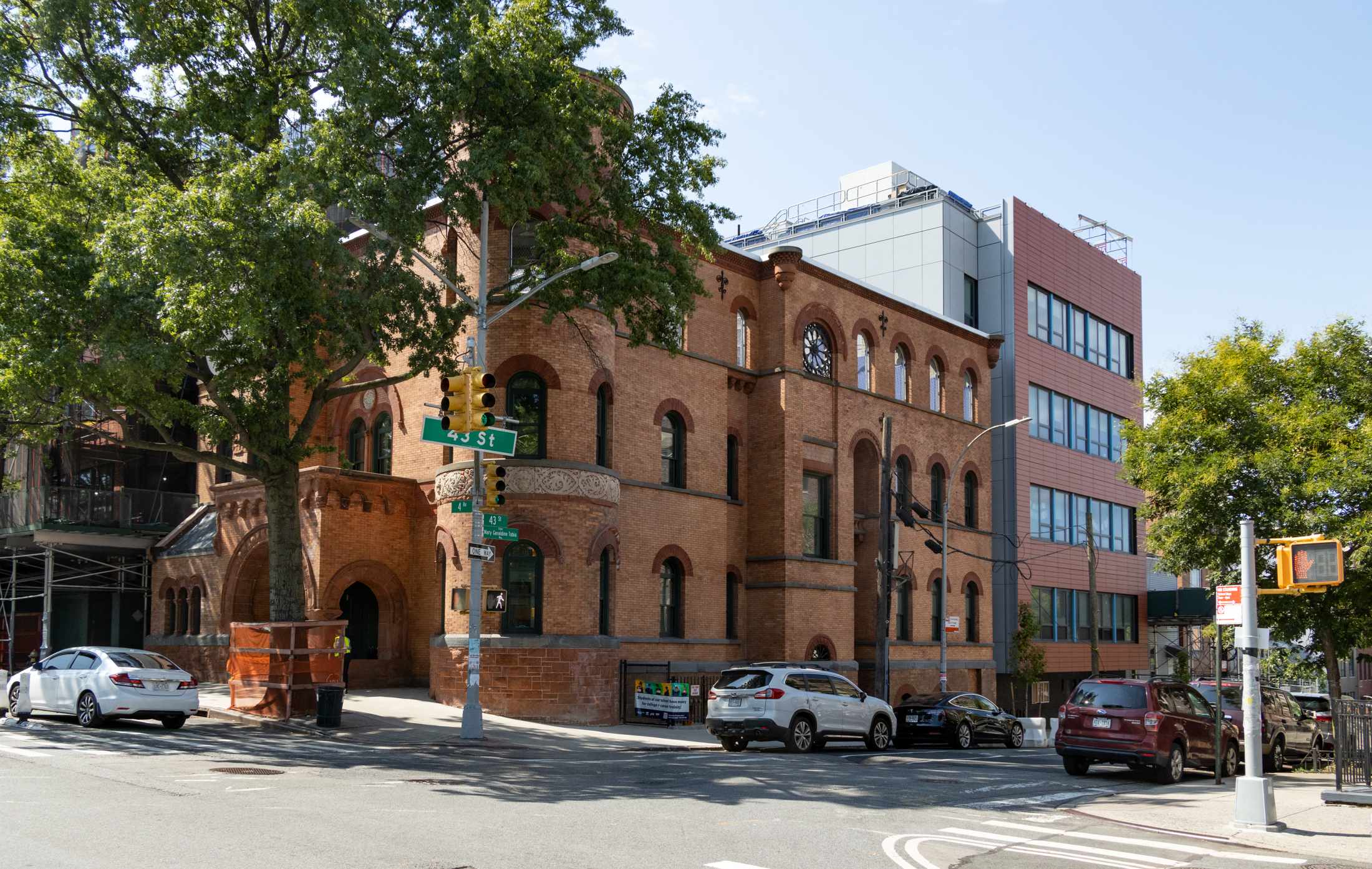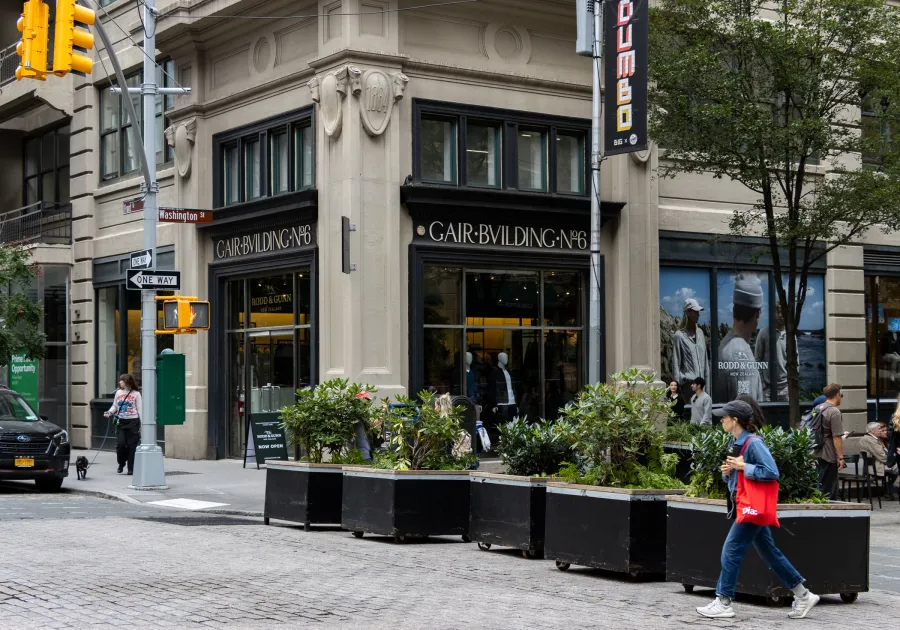New Docs Suggest AY Project Riskier Than Thought
The odds of the Atlantic Yards project being a financial success (and therefore getting completed) look a little dicier based on the information contained in 660 pages of financial information released by the Empire State Development Corporation in response to assemblyman James Brennan’s and State Senator Velmanette Montgomery’s Freedom of Information lawsuit filed back on…


The odds of the Atlantic Yards project being a financial success (and therefore getting completed) look a little dicier based on the information contained in 660 pages of financial information released by the Empire State Development Corporation in response to assemblyman James Brennan’s and State Senator Velmanette Montgomery’s Freedom of Information lawsuit filed back on March 1, reports The New York Times. The documents confirm that the overall project is risky, said Brennan. This information should have been disclosed to the public before the project was approved. Developers and brokers interviewed for the article seemed to agree that Forest City Ratner’s assumptions for its construction costs were too low and its sales prices too high. Bottom line: Ratner’s counting on a continued rising market to bail him out. Regardless of the optimism built into the model, the biggest thing that comes out of the article is that any forecasts for a project this large that occurs over this long a time period have to be taken with a huge grain of salt. I could see this project taking many forms over the years, said RBC real estate analyst Richard Moore. It could go either direction, I imagine. All of this, according to the Atlantic Yards Report, prompts the following questions:
Would Forest City, after getting significant subsidies for infrastructure and the benefit of eminent domain, be required to build its project on any schedule, or could it leave interim surface parking lots indefinitely in Prospect Heights? What profit might the developer actually earn? Should the project be as big as proposed? Is the risk faced more by the public, or by the developer?
By the way, check out this cool photo map that Tracy Collins recently put together.
Official Sees Possible Risk in Big Project in Brooklyn [NY Times]
Murky Times Article on AY Financials [AY Report]





anon at 9:50 – how many years will it take to make a 50% profit? And what is the risk of making that profit? It sounds like this story is saying that if the market doesn’t continue up there may not be much, if any profit. So the risk is pretty high.
The press realease above doesn’t make any sense. Since when does cheap land assure us that AY is going to be an economic (to say nothing of environmental) success?
The simple act of giving Ratner $2 billion and having our utilities go up 17% doesn’t assure us of anything at all. Given the scale of the project, 15 years of construction, increased pollution and a lot of other negatives, it’s entirely possible that the net benefit of this mess isn’t a positive number at all.
Yes, AY will employ people. But we should all ask at what cost.
that Brennan press release posted above shows that for the 4 billion dollar project 1.35 billion will be equity investment and those investors will make….a 50% profit. That is the part of the story the Times somehow missed.
Every new residential development outside of the Manhattan Core is subsidized in some way or another. I agree that it should end – it only really benefits landowners who will have to lower their prices.
For the utilities though and infrastructure costs, these are all offset by the increases in the area economy, not to mention the revenue gained from the city income tax. It is in everyone’s best interest that the city continue to grow and be a world financial center. That simply cannot happen as long as there is a housing shortage.
So your utility bill goes up $20 a month, but you have better job opportunities and better schools. You’ll probably end up making more money. You might even be able to make some money due to rising real estate costs.
If you have a mortgage and if your house is your sole leveraged “investment” you will be in serious trouble if the economy begins to decline in the city. This is a real concern for employers. At some point, it makes sense to leave the city because you cannot pay employees enough to live here. That can lead to (and in fact HAS led to in the past) a domino effect where many employers pick up and go elsewhere.
In any event, construction costs, while they have increased recently, are nowhere near as big of a problem as rising land costs. Because AY is being built on city-owned land that was acquired at a relatively low price, the success of the development is assured.
So what if their income projections are overly optimistic – the demand is still strong. In the end, that’s all that matters. It WILL be profitable, the question is how much.
In any event – a 9.6% rate of return for a safe investment like residential real estate in a prime neighborhood is not ridiculously low. It’s certainly better than many other investments. The discussion of architectural fees are inconsequential. The article makes the dubious claim that $369 a square foot is “below industry averages”, but for a residential building that is nonsense. I’ve personally seen construction budgets for many other towers in Brooklyn and they are quite similar. Forest City Ratner IS a developer after all – and there are going to major economies of scale associated with a project this size. Those construction costs are entirely reasonable. Overall, this NY times article is weak on criticism and was not written by someone intimately familiar with the market.
————————–
Bruce Bender, Forest City V.P.: “We said we will do 50 percent of rentals as affordable for low- and moderate-income families, and we will. And we made it legally binding,†he added. “Find someone else who does this and let us know.”
————————–
if there’s money to be made via tax brakes etc. anyone will do this.
I would just like to point out that none other than Cororan’s own Jerry Minsky is quoted in the Atlantic Yards documents released and prepared by the ESDC as saying that the projections for the sales and rentals of the proposed AY project are sound. They don’t quote him by name but they say all of his titles and that he works for the FG office of Corcoran and detail his past company affiliations and experience. So maybe somebody can ask Jerry wtf please.
“The documents confirm that the overall project is risky,†said James F. Brennan, a Brooklyn assemblyman…. “This information should have been disclosed to the public before the project was approved.â€
Of course any and all risks should have disclosed, but would disclosure have made any real difference? Residents (and taxpayer) questions & opinions were ignored or ridiculed, and simultaneously scoffed at by an exceptionally arrogant Ratner machine. Period.
“This is disturbing, because the affordable housing was marketed as the main public benefit of the project.â€
“Disturbing” is too nice of an adjective to describe what may turn out to be almost no real affordable housing or at best very few units, built years down the line if even then. Is there any guarantee that ANY affordable units will ever be built? I don’t believe there is.
Bruce Bender, Forest City V.P.: “We said we will do 50 percent of rentals as affordable for low- and moderate-income families, and we will. And we made it legally binding,†he added. “Find someone else who does this and let us know.”
Um, I think as taxpayers we would have loved to have seen some “someone else” even get a CHANCE to make a proposal, but of course this was never designed to be open for competitive bidding.
Cretins.
Currently we’re at $2 billion in taxpayer subsidies and a proposed 17% increase in everyone’s utilities to make this happen.
PR from AM Brennan;’s office 07.01.07:
http://tinyurl.com/2fygzm
“The Empire State Development Corporation (ESDC) and Forest City Ratner Corporation (FCRC) provided 660 pages of financial data concerning the Atlantic Yards Development project to resolve a Freedom of Information lawsuit by Assembly Member James Brennan (D-Brooklyn) and State Senator Velmanette Montgomery. Mr. Brennan argued the case before Manhattan Supreme Court Justice Joan Madden with the assistance of Corey Shapiro of the law firm of Wolfson and Carroll. Mr. Brennan introduced legislation in 2006 with four other area Assemblymembers that would have limited the size of the project to 5.8 million square feet, while preserving the affordable housing.”